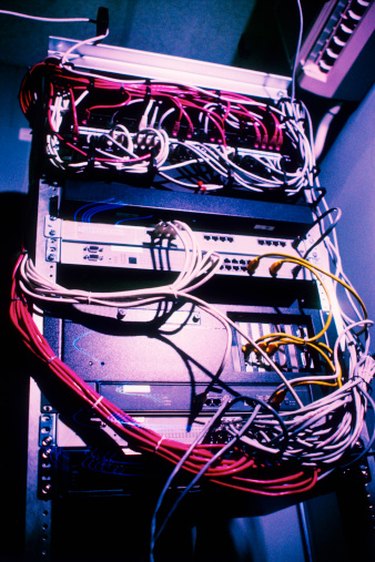
The default gateway is part of the configuration of any PC connected to a wired or wireless network. In most configurations, the default gateway is provided by your local router and handles any traffic destined outside of your network.
Default Gateway Explained
Video of the Day
Simply put, a default gateway is the place your computer will send data when it doesn't know specifically where that data should go. This applies, particularly, to any traffic destined for a public Internet Protocol (IP) address. You computer will generally know about any destination on your own network, as those computers will have a similar IP address (e.g. 192.168.1.5 and 192.168.1.6)
Video of the Day
No Internet Access
Realistically, the lack of a default gateway address means your computer will have no way of getting to the Internet. Theoretically, your computer could hold a routing table -- a list of addresses with corresponding information about which router a packet should be sent to in order to reach that address -- that would identify sources outside of your network. However, this is unreasonable for two reasons. First, that routing table would require hundreds of millions of entries, constantly update due to line failures and router outages. Secondly, most normal Internet configurations involve a single router, so the next "hop" for all of those entries would probably be the router that should be serving as a default gateway.
Improper Configuration
In many small networks, the same device that provides the default gateway is the same device which connects the internal network. However, if this device is still offering and internal IP address, but refuses to provide a default gateway, there may be an error on that device. If you know what the default gateway should be, then you can test this by going into your adapter setting and manually configuring the default gateway. (Hint: for most home networks, the default gateway will likely be the first host in your network, so if your IP address is "192.168.1.2," the default gateway is likely "192.168.1.1.")
Possible Outage
It is also possible that the lack of a default gateway corresponds to a "self-assigned" IP address. If this is the case, then there is a problem with the equipment to which your computer is connected. The best way to confirm this is to see if your computer's local IP address starts with "169.254..." This is an indication that it could not find a device to assign it neither a local IP address nor a default gateway address.